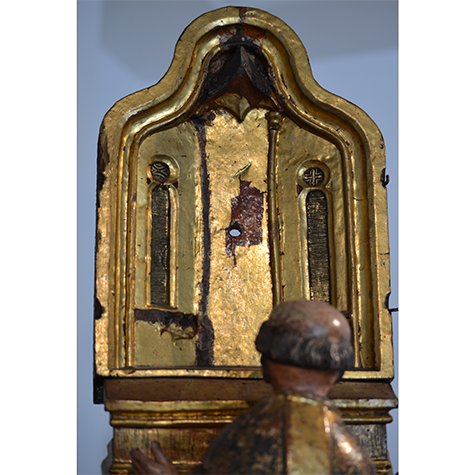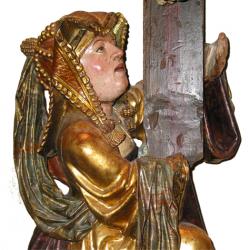Catalogue
THE RELIEFS OF THE MAIN ALTAR OF SAN MARTIN
OBSERVATIONS
The reliefs and groups of figures in Medina del Campo are a good example of the difficulty of establishing whether we stand before an imported work, or one that was manufactured in situ. Whatever the case, the author was obviously well-acquainted with Flemish production, as may be observed in finer details discussed in the Bibliography section: the positioning of the thieves, the headdress of Mary Magdalene, the altarpiece profile in the scene depicting the Mass of Saint Gregory, etc..
Other characteristics, however, are more in keeping with Spanish tradition. Despite its comprising numerous figures, the Calvary is not distributed in the same way as other spectacular reliefs with several landscapes and figures, but rather as a group of carved figures, some of which are extrinsic. Regarding the Mass of Saint Gregory, though it has been reiterated that it is not an unusually-produced work in Flemish production, here it enjoyed great popular devotion and was a scene that frequently appeared in Spanish woodcarving. The mere presence of such an exceptional episode on account of its deep-rooted Spanish tradition as the miraculous apparition of Saint James, the Apostle (Santiago) during the Battle of Clavijo is yet another strange aspect in Flemish production that, at very least, might be considered as being the possible consequence of a very specific commission. However, when we consider the way the niches of the predella have been assembled and the polychrome decoration of the reliefs, then it seems more than likely we are standing before a piece manufactured in Castile.


